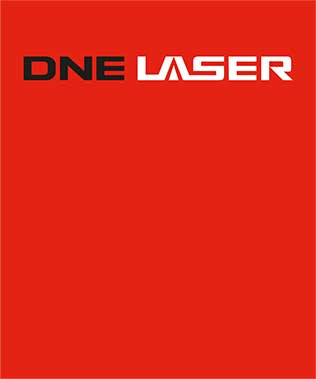Discussion on Laser Cutting Perforation Technology
Published:2021-03-30 Browse:40Editor in charge:DNE Laser (Member of Bystronic)
Blast perforation
Blasting perforation-the material is irradiated by the continuous laser to form a pit in the center, and then the molten material is quickly removed by the oxygen stream coaxial with the laser beam to form a hole. Generally, the size of the hole is related to the thickness of the plate. The average diameter of the blasting hole is half of the plate thickness. Therefore, the blasting hole diameter of the thicker plate is larger and not round. It is not suitable for use on parts with high machining accuracy. On the waste. In addition, since the oxygen pressure used for perforation is the same as that used for cutting, the splash is larger.
Pulse perforation
Pulse perforation——Using pulse laser with high peak power to melt or vaporize a small amount of material. CNC flame cutting machine usually uses air or nitrogen as auxiliary gas to reduce the hole expansion due to exothermic oxidation. The gas pressure is lower than the oxygen pressure during cutting. Each pulse laser only produces small particle jets, which gradually penetrate deeper, so it takes a few seconds for the thick plate to perforate. Once the perforation is completed, immediately change the auxiliary gas to oxygen for cutting. In this way, the perforation diameter is smaller, and the perforation quality is better than blast perforation. For this reason, the laser used should not only have a higher output power, but more importantly, the time and space characteristics of the beam. Therefore, the general cross-flow CO2 laser cannot meet the requirements of laser cutting. In addition, pulse perforation requires a more reliable gas path control system to realize the switching of gas types and gas pressure and the control of perforation time.
In the case of pulse perforation, in order to obtain high-quality cuts, the transition technology from pulse perforation when the workpiece is stationary to continuous cutting of the workpiece at constant velocity should be paid attention to. In theory, it is usually possible to change the cutting conditions of the acceleration section, such as focal length, nozzle position, gas pressure, etc., but in fact, it is unlikely to change the above conditions due to too short time. In industrial production, it is more realistic to mainly adopt the method of changing the average power of the laser. The specific method is to change the pulse width; change the pulse frequency; change the pulse width and frequency at the same time.
Analysis of the deformation of the small hole (small diameter and thickness) in the cutting process:
This is because the machine tool (only for high-power laser cutting machines) does not use blasting perforation when processing small holes, but uses pulse perforation (soft puncture), which makes the laser energy too concentrated in a small area. The non-processing area is also scorched, causing hole deformation and affecting processing quality. At this time, we should change the pulse perforation (soft puncture) method to the blast perforation (ordinary puncture) method in the processing program to solve it. The opposite is true for laser cutting machines with lower power. Pulse perforation should be used to obtain a better surface finish when processing small holes.
 Bystronic (Shenzhen) Laser Technology Co., Ltd.
Bystronic (Shenzhen) Laser Technology Co., Ltd.